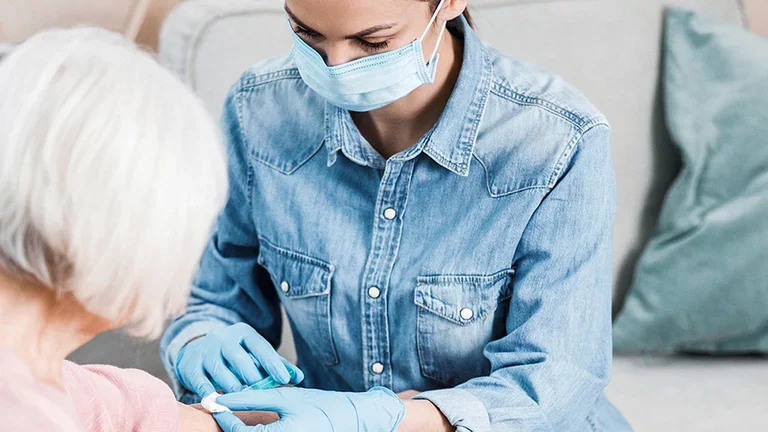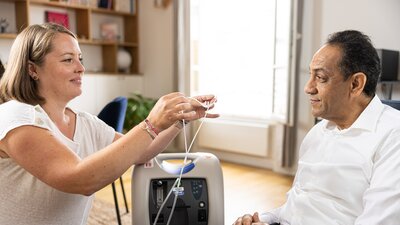Knowledge sharing for better care of chronic patients
Published on April 28, 2021
3 minutes

Antonio is a nurse and Laurenţiu a physiotherapist. Both work south-west of Milan, monitoring patients at home on behalf of Medicasa, an Italian subsidiary of Air Liquide Healthcare. The firm works with over 38,000 patients each year, representing approximately 1,700,000 home visits made by 1,600 home health professionals.
Can you describe your job to us?
Antonio: As a nurse, I assess functional, psychological and social aspects of patients’ health. My assessment aims to understand, from a clinical perspective, the problems affecting the patient, as well as patients’ day-to-day environment, who takes care of them and monitors them and which health agency is responsible for them. I contact the agency to share the individual care plan, which will involve other specialist health professionals if necessary. This multidisciplinary approach begins at the outset, which is very important as the first aid administered is decisive, whether at home or in hospital. I also assess caregivers’ needs. Do they need training? Does the home need to be adapted? Once the individual care plan is defined, I visit the patient according to the schedule drawn up, constantly reassessing their state of health. These periodic reports may identify a need to involve other specialist professionals, such as physiotherapists or nutritionists, in which case I involve them in the treatment protocol. After each visit, the information is shared with all healthcare professionals working with the patient.
Laurenţiu: I am a physiotherapist and whenever a new patient is assigned to me, I visit their home to introduce myself. Based on the individual care plan, I assess their degree of autonomy in their home and begin physiotherapy to improve, or at least maintain it, week after week. After a few months, I conduct an assessment in which I indicate whether the objectives have been fully or partially met or else not met. In the last two cases, I advise the patient to continue receiving support. In complex cases, there is collaboration between various healthcare professionals – it requires real teamwork from the outset!
Who are your patients and how do you manage them at home?
Antonio: Usually, we support patients with chronic illnesses once they leave hospital. These are patients who require additional care at home, having overcome the acute phase of their illness following treatment in hospital. This means that a succession of several health professionals may be involved, so coordinating their actions is essential to ensure optimal treatment.
Laurenţiu: There is a broad spectrum of pathologies and each patient is different. I have patients aged from 20 to 101, with diabetes, neurological disorders, loss of cognitive ability, etc. Treatment not only involves drugs, but takes a multidisciplinary and personalized approach, drawing on an entire ecosystem, from doctors to caregivers. We all share the same objective – to improve patients’ autonomy. Our collaboration is therefore fundamental – we are all pieces of the same puzzle. Whether in the hospital or at home, the patient is the center of our attention.
Antonio: At Medicasa, we have access to computerized medical records to simplify monitoring of patients’ health and communications between all those involved. Everyone is familiar with the individual care plan put in place and all the adjustments recorded. This means that everyone at a patient’s bedside is aware of their condition, to ensure that they receive the most appropriate care.
What are the patient benefits?
Antonio: Patients feel supported and reassured since they are cared for by a team that shares information and works together. They are involved in their treatment, and the same goes for caregivers and families who receive support in managing the illness.
Laurenţiu: They know and can see that we are doing everything in our power to improve their quality of life and help them to stick to the treatment plan. That goal can only be achieved with the collaboration of everyone involved in this ecosystem, in which the patient is at the center as well as being the main actor.


